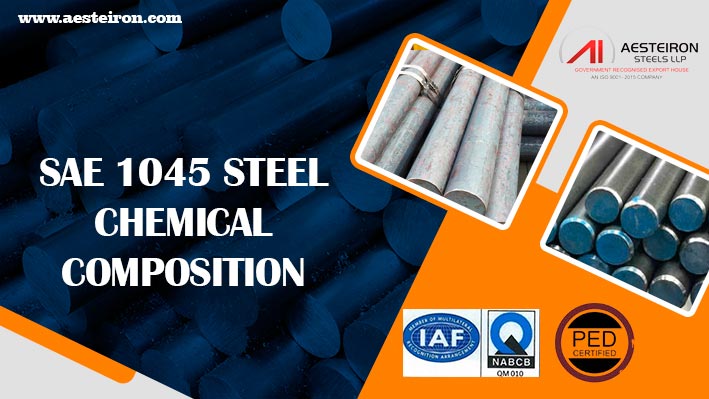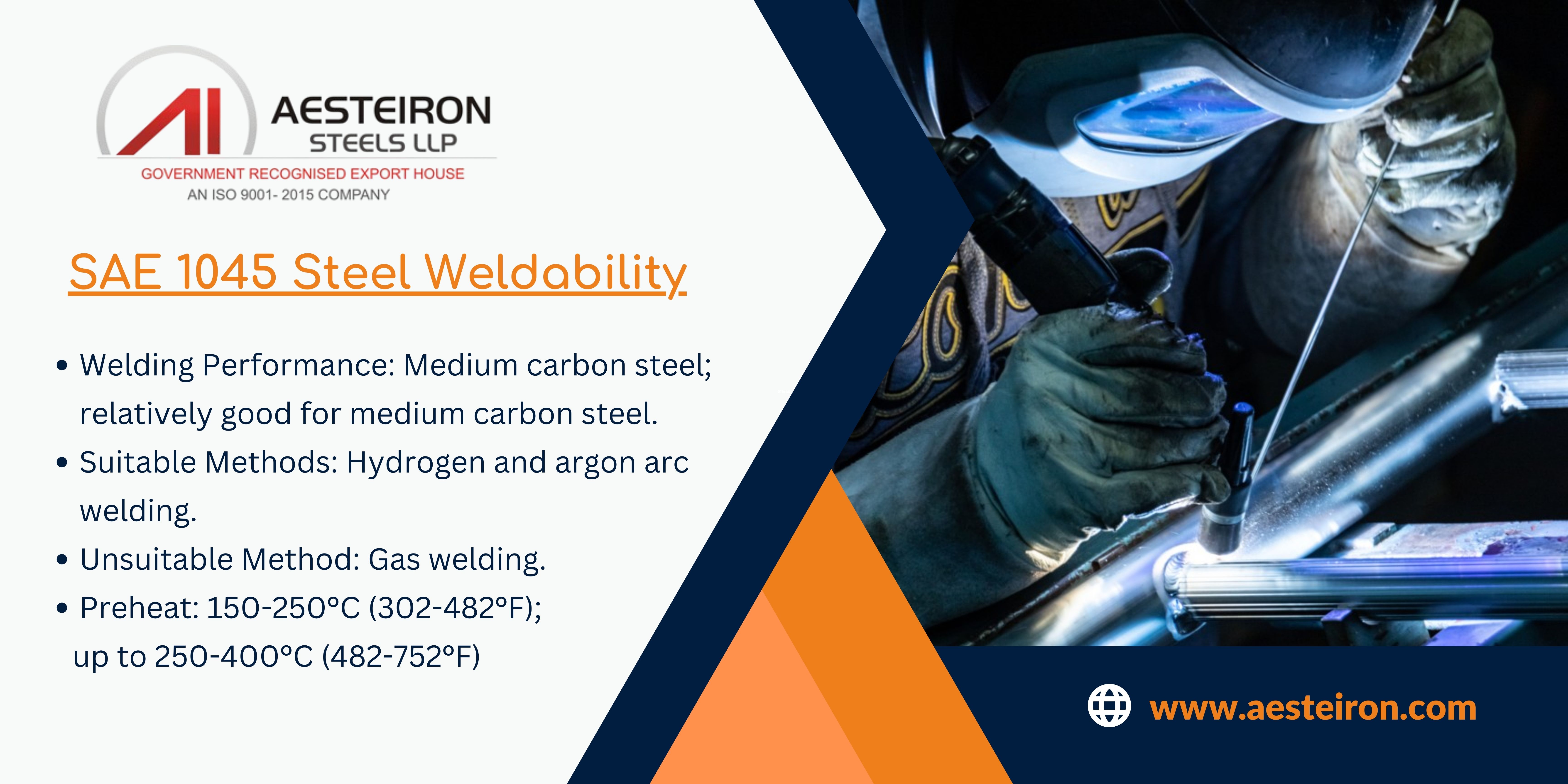SAE 1045 Steel Chemical Composition

Understanding the chemical composition of SAE 1045 steel is crucial as it directly influences its mechanical properties. The table below provides a detailed overview of the chemical makeup of this popular carbon steel grade.
Table of contents
- SAE 1045 Steel Chemical Composition
- ASTM 1045 Weldability
- Mechanical Property of AISI 1045 Steel Cold Drawn
- Heat Treatment of DIN 1.1191
- 1045 Steel vs 4140 Steel
- 1045 Quenched and Tempered Steel properties
- AISI 1045 Equivalent Grades
- Thermal Properties of SAE 1045
- Tolerance of AISI 1045 Carbon Steel
- Ck45 Steel Annealing
- Quality Certification of Steel 1045
- AISI 1045 Corrosion Resistance
- Electrical Properties of JIS S45C Steel
- Applications of SAE 1045 Steel
SAE 1045 Steel Chemical Composition
| Grade | C | Si | Mn | P | S |
|---|---|---|---|---|---|
| 1045 | 0.43-0.50 | 0.15-0.35 | 0.60-0.90 | ≤0.04 | ≤0.05 |
AISI 1045 is known for its excellent weldability, machinability, and high strength. Its good weldability ensures strong, durable joints that are resistant to cracks, making it ideal for structural applications. Additionally, its machinability allows for faster cutting with minimal tool wear, resulting in better surface finishes and reduced manufacturing costs. The high strength of this steel makes it suitable for heavy-duty construction and environments where extreme conditions are present.
AWS 1045 Weldability

| Aspect | Details |
|---|---|
| Welding Conditions | AISI 1045 is readily welded with the correct procedure |
| Electrodes | Use low hydrogen electrodes. |
| Pre-heating | Pre-heat workpiece to 200°C – 300°C (392°F – 572°F). |
| Welding Temperature | Maintain pre-heat temperature during welding. |
| Cooling | Cool slowly using sand or ashes to control the cooling rate. |
| Stress Relief | Perform stress relief at 550°C – 660°C (1022°F – 1220°F). |
DIN 1.1191 Material Are Generally Available in Black Hot Rolled or Normalized Conditions
Normalized condition improves the mechanical properties, reduces internal stress, enhances machinability, and refines the grain structure, making it more suitable for various industrial applications.
Heat Treatment of DIN 1.1191
| Process | Heating Temperature | Cooling Method |
|---|---|---|
| Forging | 850°C – 1250°C (1562°F – 2282°F) | Cool in a furnace |
| Annealing | 800°C – 850°C (1472°F – 1562°F) | Cool in a furnace |
| Normalizing | 870°C – 920°C (1598°F – 1688°F) | Cool in still air |
| Stress-Relieving | 550°C – 660°C (1022°F – 1220°F) | Cool in still air |
| Hardening | 820°C – 850°C (1508°F – 1562°F) | Quench in water or brine |
| Tempering | 400°C – 650°C (752°F – 1202°F) | Cool in still air |
When comparing AISI 1045 and 4140 steel, it's important to note their differences. While 1045 is a carbon steel with moderate hardness and strength, 4140 is an alloy steel containing chromium and molybdenum, offering superior toughness and wear resistance. This makes 4140 more suitable for applications like axles and gears, while 1045 is commonly used in machinery parts and automotive components.
The quenched and tempered properties of 1045 steel vary depending on the section size. For example, sections up to 16mm have higher tensile strength compared to larger sections. These properties make it versatile for different engineering needs.
Equivalent grades of AISI 1045 include C45 (EN 10083-2), S45C (JIS G051), and 1045 (AS 1442). Understanding these equivalents helps in selecting the right material based on international standards.
Thermal properties such as thermal conductivity and expansion coefficient are also key factors in determining the performance of SAE 1045 in varying temperature environments. Tolerances for AISI 1045 vary depending on the surface finish, which affects the final product’s precision and quality.
Annealing processes, especially for Ck45 steel, help improve machinability and reduce hardness. Quality certifications ensure that the steel meets required standards in terms of chemical composition, mechanical properties, and surface finish.
In terms of corrosion resistance, AISI 1045 is not highly resistant in harsh environments. It is prone to rust when exposed to moisture, acids, or saltwater. Therefore, protective coatings or treatments are recommended for long-term durability.
Electrical properties of JIS S45C steel include specific resistivity values at different temperatures, which are important for applications involving electrical conductivity. Finally, the wide range of applications for SAE 1045 includes pins, gears, shafts, and many other mechanical components, showcasing its versatility and reliability in industrial use.
Heat Exchanger, Suction Line, Cu-Al Connect Tube
cheap and common Fin Type Condenser,high quality Cooling Fridge Refridgerator,Finned Type Cooling high quality Evaporator,,condensator and common evaporator
Xinxiang Yukun Refrigeration Technology Co.Ltd , https://www.yukunevaporator.com